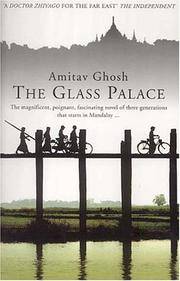 Twenty-five years after the 1988 pro-democracy uprising in Burma, those who took part in the demonstrations were able to commemorate the anniversary for the first time, remembering fallen comrades and celebrating the spirit of the mass protests that spawned a movement for democracy, human rights and federalism throughout the country and around the world.
Twenty-five years after the 1988 pro-democracy uprising in Burma, those who took part in the demonstrations were able to commemorate the anniversary for the first time, remembering fallen comrades and celebrating the spirit of the mass protests that spawned a movement for democracy, human rights and federalism throughout the country and around the world.
Over the last three days, thousands of those who were involved in the 1988 protests and those who have since picked up the torch gathered at a conference hall in Rangoon to discuss key issues in Burma’s transition, including peace and federalism, national reconciliation, democracy and human rights, and state-building and the role of democratic forces, including civil society in Burma and in exile, political parties, ethnic groups, farmers and workers. Discussions were lively and produced detailed recommendations for the future of the country, the likes of which would have been unthinkable only three years ago. Some points raised, such as accountability for the violent attacks on protesters, are still contentious today. It will be telling about the current state of reforms if there are any repercussions against those who organized or participated in the anniversary.
Outside the hall, there were exhibitions of photos of the 1988 protests, political prisoners, and the All Burma Students’ Democratic Front (the armed group established after students fled from the violent crackdown to the jungle on the Thailand-Burma border), as well as a replica of a typical jail cell in which protesters were held (and in which human rights defenders are still being held today). There was also a heartbreaking video on repeat with scenes from the uprising and the violent crackdown, surrounded by a crowd of people watching with horror and sadness that such cruelty was possible. A group of musicians and former political prisoners led lively sing-a-longs of protest songs which they had sung together twenty-five years ago. Past all of this would walk notable figures, such as 88 Generation Peace and Open Society leader Min Ko Naing, Minister Aung Min, or US Ambassador Derek Mitchell, trailed by crowds of photographers, journalists and people seeking autographs or photos.
The event culminated today with musical performances and speeches, including by Aung San Suu Kyi, harkening back to 1988 when she first took the stage to address the protesters in Rangoon. Her entrance into the hall interrupted the program as media surged around her and had to be corralled back. Upstairs, throngs of people pressed together in the sticky heat cheering for “Amay Suu” with palpable excitement. On the front steps of the hall, a large screen was erected for the crowds who were not able to fit inside the hall.
After 25 years under brutal military dictatorship, the people’s desire for democracy and freedom is just as strong as it was then. They have survived imprisonment, exile, war and the death of loved ones with the faith that a democratic Burma is on its way and the spirit to continue to fight for it. It was both surreal and inspiring that the event was allowed to take place, and that it was attended by so many of the people who will play important roles in Burma’s future.
 2013 has been a year in which many of the nascent reforms of 2012 have begun to take root, but also one in which new challenges have emerged. In 2014, there will be many opportunities for the government of Burma to show its commitment to democratic transition.
2013 has been a year in which many of the nascent reforms of 2012 have begun to take root, but also one in which new challenges have emerged. In 2014, there will be many opportunities for the government of Burma to show its commitment to democratic transition.







 On 11 December, my friend Moe Thway and his 7 fellow protest organizer colleagues were released from prison, as well as Ashin Gambira. It was an unexpected but bittersweet relief.
On 11 December, my friend Moe Thway and his 7 fellow protest organizer colleagues were released from prison, as well as Ashin Gambira. It was an unexpected but bittersweet relief.